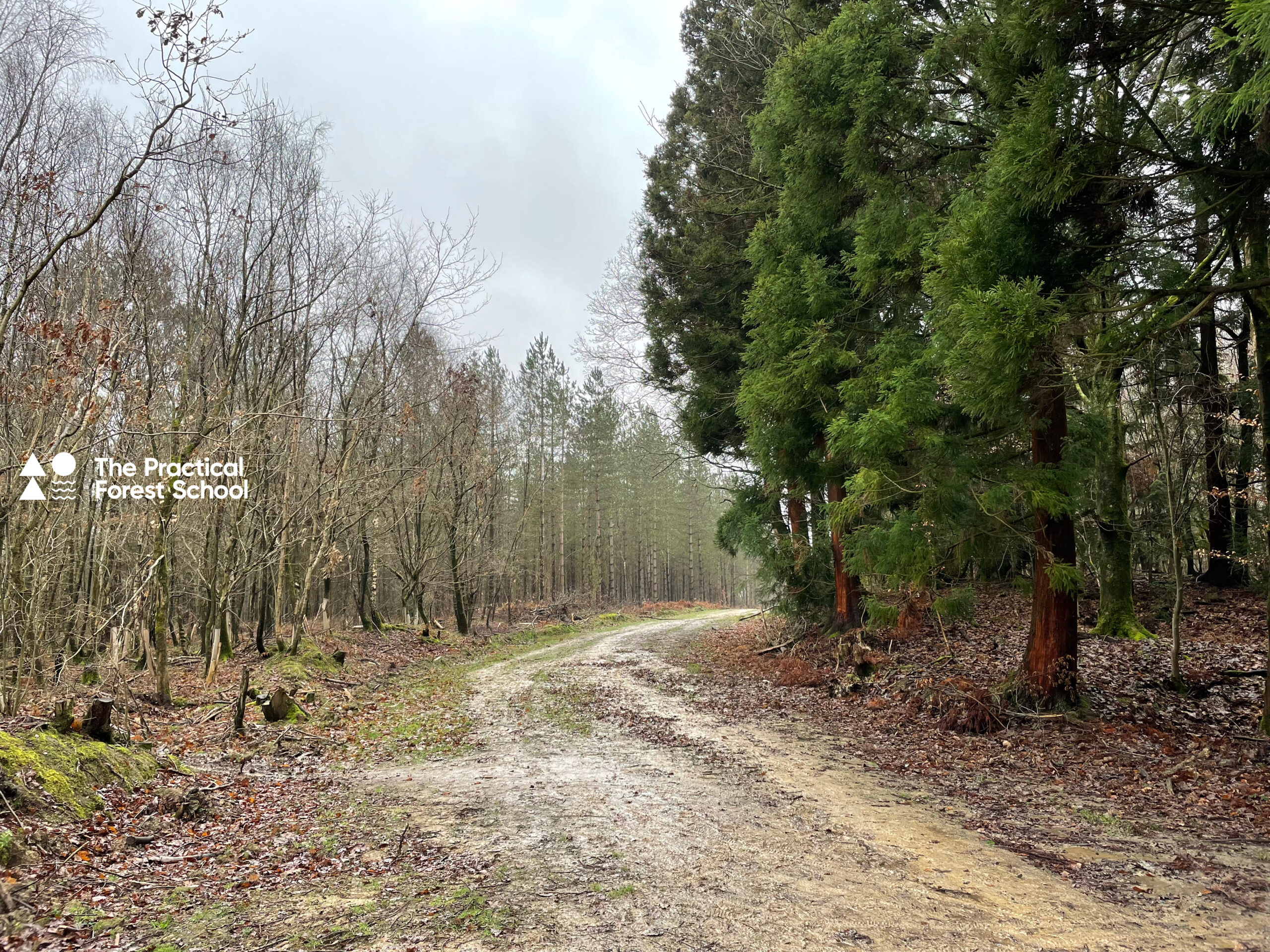Learning and Development at a Forest School Programme
This article contains affiliate links at no cost to you.
Are you taking the Level 3 Forest School Leader training? If so, you’ll need to create a portfolio that showcases your understanding and application of what you have learned. In this article, I’ll share a forest school portfolio example so you can see the kinds of things that are expected.
One of the units in the training is the Forest School approach to learning and development. The exact name of your unit might be different, but it will cover the same or similar topics. I completed my Level 3 portfolio in 2018 and below I share a shortened and edited version of what I submitted.
This is not offered for you to copy – plagiarism is both not necessary and not supportive of your development as a Forest School Leader. Instead, it’s just to give you some starting points about what kinds of things could be included when you write your own.
The Learning and Development Unit
This unit of the forest school leader training has the following learning outcomes:
- Understand the Forest School principles and holistic approach to learning and development
- Understand the value of the play process
- Understand relevant theories of learning and development and how they apply to Forest School
- Understand the impact of behaviour on learning and development
- Know how to reflect on your own Forest School training.
It’s quite an involved unit with each of those learning outcomes being broken down into a number of criteria for assessment, so let’s look at each of them in more detail.
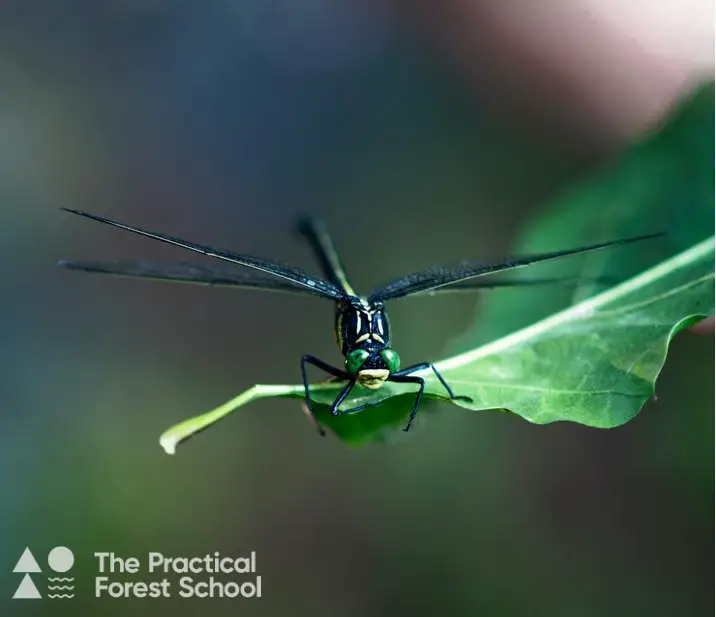
1. Understand the Forest School principles
There’s a lot covered in this section. It assesses your ability to:
- Summarise how the principles apply to your own sessions – as part of your Level 3 leader training you will have to run 6 sessions as a minimum, and this is what is referred to as your ‘programme’.
- Give examples of ways that Forest School encourages physical development and well-being
- Give examples of how Forest School supports social and emotional development
- Give examples of how Forest School supports intellectual development.
Example from my Level 3 Portfolio:
I am running my Forest School sessions as a long-term process. It is an after school club, so I am able to work with the same children week after week, 30 weeks a year. I get the children to feed back at the end of each session so I know what they liked and did not like. They also get to suggest activities for future sessions, this ensures the children can achieve continual development.
I am able to provide plenty of opportunities for my children to take supported risks. A great example is paddling in the stream. The water level changes every week, so I have a rule where the child must use a stick to ensure the water level is not higher than the level of their own wellies. This way the children get to determine where is safe for them to go, and that some parts are OK for a 10 year old and not for a 5 year old.
In my portfolio I added a lot more detail and more examples about how the site is set up and the age range and abilities within the group that formed my programme, along with how I foster resilient, confident and creative learners. I also included information about my professional development and the range of activities I undertake to ensure I maintain my skills.
Level 3 Portfolio example:
Forest School encourages physical development through the use of gross and fine motor skills.
The act of climbing a tree or walking on a log helps develop physical skills like limb control and balance. Also carrying logs for den building can be strenuous and support developing physical fitness.
Once you have run your programme, you will have plenty of examples of what you have seen to include in this section to evidence the first learning objective of the unit. For example:
- The child who creates elaborate role play scenarios
- The child who makes things from clay and then learns the best way to dry them by the fire
- The child who couldn’t make a fairy fire at first and then persevered until they could.
Think of examples like this from your own group and use them to evidence your thoughts in this section.
2. Understand the value of the play process
This section requires you to provide evidence that you can summarise the key characteristics of play and its role in Forest School, and explain with examples how play and choice are integrated into your own programme and group sessions.
Example from a Level 3 Portfolio:
Play comes naturally to children and it allows them to learn and explore things at their own pace. As play is fun, it makes it easier to remember the things we learn whilst doing it. Learning through play is the child-centred pedagogy that is central to Forest School. Combining play and outdoor learning allows children to develop emotionally, manage risk, grow independence and social skills.
I went on to outline how play and choice are incorporated into my sessions by talking about the session structure I use and providing examples of situations where children have exercises their choice both in whether to take part in activities or tool use, and in what shape that activity becomes.
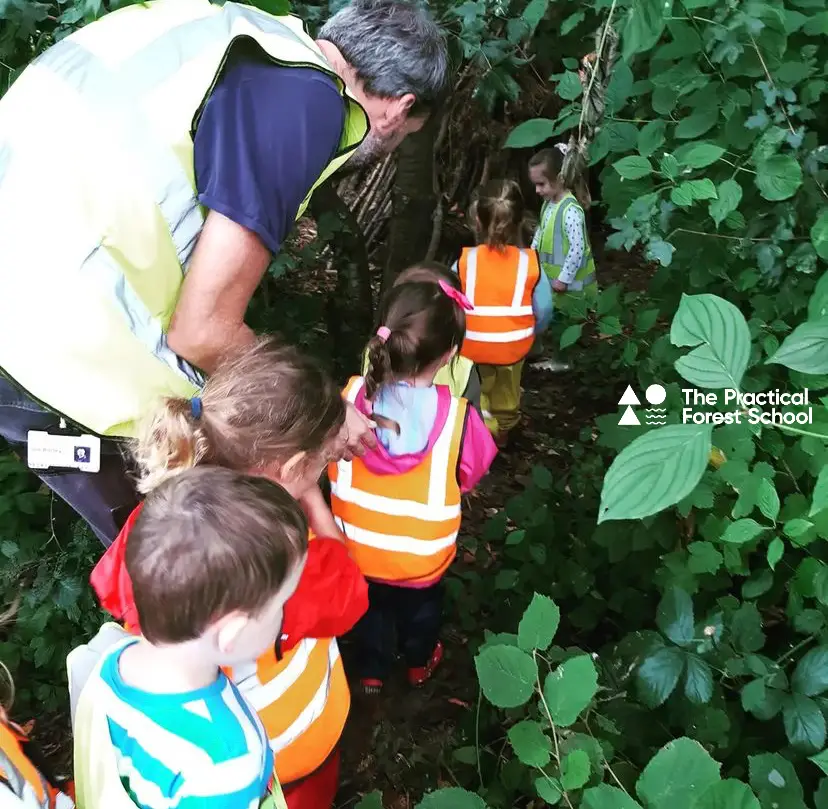
3. Understand relevant theories of learning and development and how they apply to Forest School
In this section you will be assessed on whether you can summarize recognized theories of learning and development with regards to how they relate to your own sessions. This is the theory part! You’ll be reading and absorbing various theories of learning and then reflecting on them. This is all going to underpin your role as a forest school leader in promoting learning and development.
Forest School Level 3 Portfolio example:
Piaget, Vygotsky, and later, Athey, looked at how children develop through practical experience. They looked at how children gather information about the world around them and they developed the theory of Schemas. Schemas are different types of observable behaviour that focus on repeatable actions. For instance, a child may want to read the same book over and over again. There are different types such as enveloping, rotation, transporting, trajectory and positioning.
As all schemas are about physical actions, they can be easily used by forest school practitioners to enhance the learning and development of children. For instance, a child that shows signs of a transporting schema can be tasked with collecting fire wood you can promote this behaviour by providing a sack or bag to collect the wood in. Alternatively, a child that exhibits signs of an enveloping schema can be given a tarp to build a den.
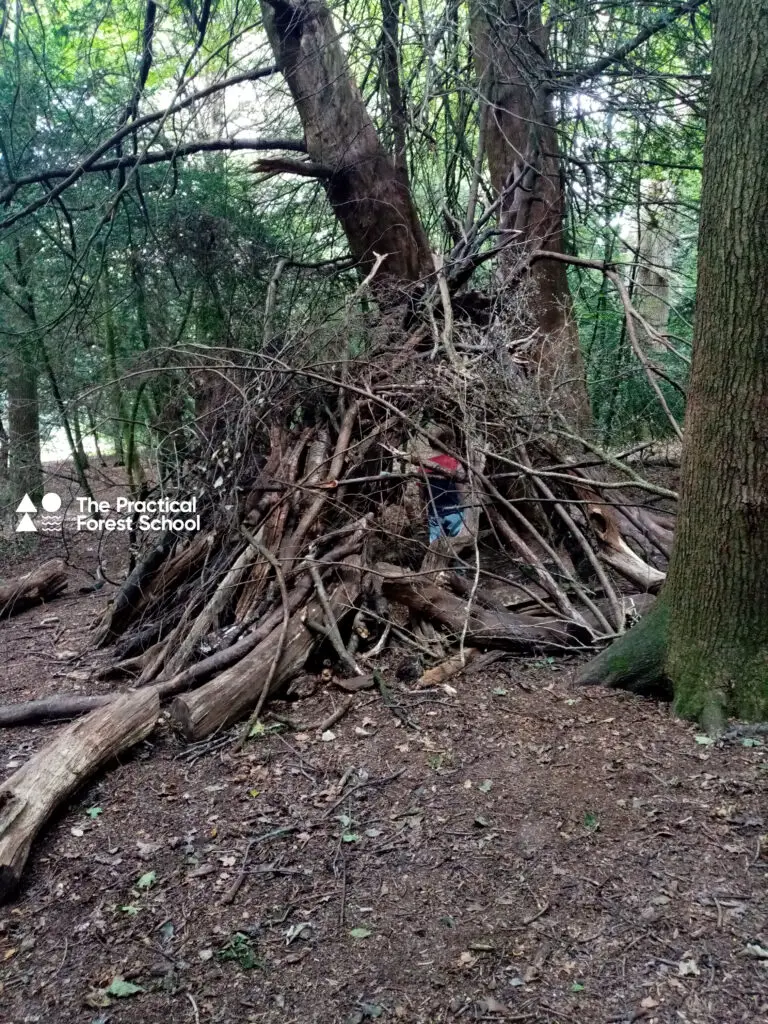
In my ‘Introduction to Forest school’ course I noticed that a 5 year old liked transporting things. I provided him with a bucket which he used to carry stones from one end of the stream to the other.
I go on to summarize Malaguzzi’s Reggio Emilia approach as well, and provide examples of how that manifests itself within my group.
This might seem like a daunting part of the course, but it’s really interesting and if you are keen to support your participants and children then it’s essential learning. Don’t worry, your trainers will make it accessible and interesting!
4. Understand the impact of behaviour on learning and development
This is another section with multiple assessment criteria. You’ll be expected to summarize some of the key influences that affect the behaviour of participants, explain how participants behaviour can impact their learning and that of others, and describe how meeting the needs of all participants develops a community of learning.
Example from my portfolio:
There are many internal and external factors that impact on a child’s behaviour which can include Social, Environmental, Biological and Neural development. Some of them are easy for a Forest School practitioner to deal with; others will be harder. It’s important to understand and identify what it is that is affecting behaviour so that we are able to address it.
Bad weather is an environmental factor that can play a big impact on behaviour. A large downpour of rain can change people’s moods, especially if they have become cold and wet. They will have less motivation to do things and could present with a negative attitude. You can do several things to counter this, for example, taking preventative action by making sure participants are correctly clothed so that there will be less affected by rain. You can also initiate high energy group games to get people moving and warmed up so they are not thinking about being cold and wet.
I also discussed and provided examples for the other types of factors that influence behaviour before going on to comment on how behaviour relates to met and unmet needs with a nod to Maslow’s hierarchy of needs.
For the section on how meeting the needs of participants impacts the setting I talked about an example of how when our Forest School area was reduced, I needed to deploy creative strategies to ensure the children had an adequate, risk-assessed environment. With physical changes, the available space contributed to a noticeable improvement in overall behaviour.
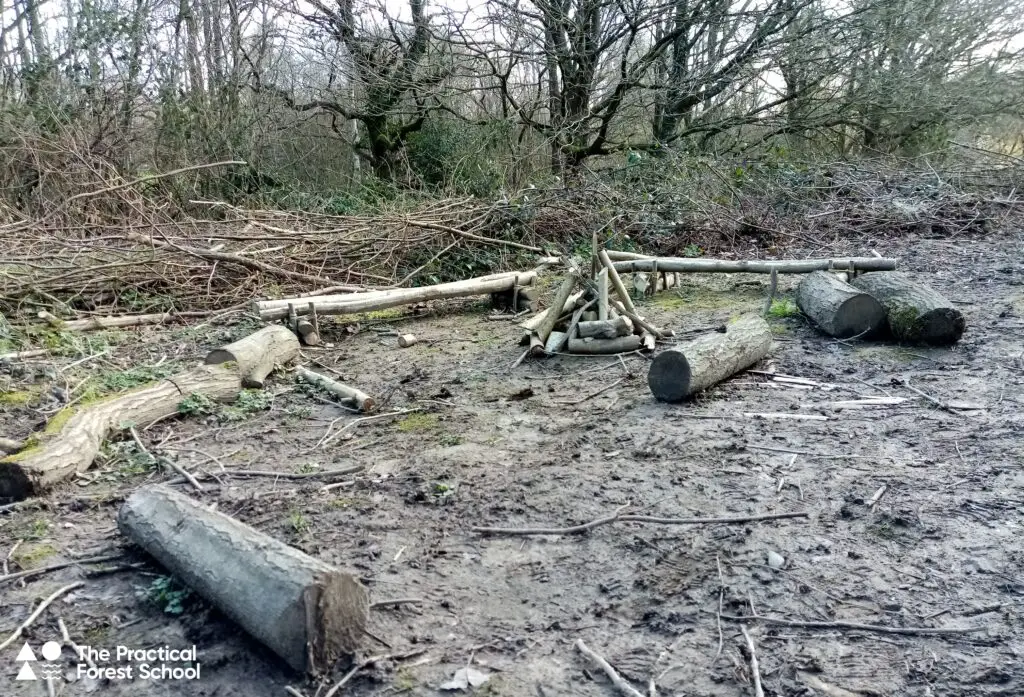
5. Know how to reflect on your own Forest School training.
This section should be relatively easy to put together as it is a personal reflection on your learning journey. You should summarize your personal development through the process and explain how your own experience of Forest School training informs your practice and professional development.
Example from my Level 3 portfolio:
What made the big difference for me was reading Last Child in the Woods. It helped me grasp the importance of outdoor play and learning and that ‘having fun in the woods’ actually has a significant serious side to it. Having learnt more about it and understood it more I now believe I am a much better Forest School leader.
This section needs to be truly your own work and reflective of your experience of your training and subsequent development outside of the Level 3 training course. When you reflect on your professional development you can include things you have done or wish to do like:
- Attending FSA events
- Learning more about knots, woodland management or any other topic that appeals
- Reading
- Watching YouTube videos.
It all counts!
Creating your portfolio
Your training provider will probably provide guidance notes – I got helpful guidance notes from the Sussex Wildlife Trust which were useful in identifying the major points and topics to include in my responses. The notes also sometimes provided a word length, which was helpful.
Your trainer will also have advice, and my group created a WhatsApp group so there was a lot of chat on there as we went through our training.
Good luck with your Forest School Leader training!
Read next:
- Forest School Programmes and the Woodland Environment
- Practical Skills for a Forest School Programme
- Planning and Preparation at a Forest School Programme
- Delivery of a Forest School Programme

About the author: Jon Borley
Jon qualified as a Level 3 Forest School Leader with the Sussex Wildlife Trust. He works independently as a practitioner running forest school clubs and also within schools both in a forest school capacity and as an outdoor learning teaching assistant, working with preschoolers to secondary-aged children. He has previously led sessions for adults as part of professional development events for the Sussex FSA, and is a member of MIAS.
